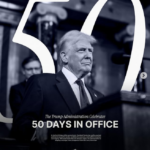Recent Posts
Indian Police Service
The Indian Police Service simply known as Indian Police or IPS, is one of the three All India Services of the Government of India. In 1948, a year after India gained independence from Britain, the Imperial Police (IP) was replaced by the Indian Police Service.
The IPS is not a law enforcement agency; rather it is a civil service in which officers are selected on the basis of professional merit as proven by competitive examinations, and to which all police officers are professionally identified. Police officers are employed by the police departments of respective states of India.
OBJECTIVES
The First Police Commission, appointed on 17 August 1865, contained detailed guidelines for the desired system of police in India and defined police as a governmental department to maintain order, enforce the law, and prevent and detect crime. The Indian Police Service is not a force itself but a service providing leaders and commanders to staff the state police and all-India Para-Military Forces. Its members, who are all at least university graduates, are the senior officers of the police. With the passage of time Indian Police Service’s objectives were updated and redefined, the rules and functions of an Indian Police Service Officer are as follows:
- To fulfill duties based on border responsibilities, in the areas of maintenance of public peace and order, crime prevention, investigation, and detection, collection of intelligence, VIP security, counter-terrorism, border policing, railway policing, tackling smuggling, drug trafficking, economic offences, corruption in public life, disaster management, enforcement of socio-economic legislation, bio-diversity and protection of environmental laws etc.
- Leading and commanding the Indian Intelligence Agencies like Research and Analysis Wing (R&AW), Intelligence Bureau (IB), Central Bureau of Investigations (CBI), Crime Investigation Department (CID) etc., Indian Federal Law Enforcement Agencies, Civil and Armed Police Forces in all the states and union territories.
- Leading and commanding the Para-Military Forces of India (PMF) which include the Central Police Organisations (CPO) and Central Paramilitary Forces (CPF) such as Border Security Force (BSF), Central Reserve Police Force (CRPF), Indo-Tibetan Border Police (ITBP), National Security Guard (NSG), Central Industrial Security Force (CISF), Vigilance Organisations, Indian Federal Law Enforcement Agencies.
- Serve at head of the departments in policy making in the Ministries and Departments of Central and State Governments and public sector undertakings both at centre and states, Government of India.
- To interact and coordinate closely with the members of other All India Services and Central Civil Services and also with the Indian Armed Forces primarily with the elite Indian Army.
- Last but not the least, to lead and command the force with courage, uprightness, dedication and a strong sense of service to the people.
- Endeavour to inculcate in the police forces under their command such values and norms as would help them serve the people better.
- Inculcate integrity of the highest order, sensitivity to aspirations of people in a fast-changing social and economic milieu, respect for human rights, broad liberal perspective of law and justice and high standard of professionalism.
HISTORY
Much before the Independence, superior police officers belonging to the Imperial Police (IP) were appointed by the Secretary of State on the basis of competitive examination. The very first open civil service examination for the service was held in England in June, 1893 and the top ten candidates were appointed as probationers of the Indian (Imperial) Police. However, it is not possible to pinpoint a date on which it could positively be claimed that the Indian Police came into being. In around 1907, the Secretary of State’s officers were directed to wear the letters “IP” on their epaulettes to distinguish them from the other officers not recruited by the Secretary of State. In this sense, 1907 could be regarded as the starting point for the Indian Police.
REFORMS ORDERED BY THE SUPREME COURT (1996-2006)
Prakash Singh, one of the former Director Generals of Police of the states of Assam and subsequently Uttar Pradesh and finally Director General of the Border Security Force, initiated a Public Interest Litigation (PIL) in the Supreme Court of India, asking the court to investigate measures to reform the police forces across India to ensure the proper rule of law and improve security across India.
Several measures were identified as necessary to professionalize the police in India:
- A mid or high ranking police officer must not be transferred more frequently than every two years.
- The state government cannot ask the police force to hire someone, nor can they choose the Chief Commissioner.
- There must be separate departments and staff for investigation and patrolling.
Three new authorities will be created in each state, to prevent political interference in the police and also to make the police accountable for their heavy-handedness, which will include the creation of:
- A State Security Commission for policies and direction
- A Police Establishment Board, which will decide the selection, promotions and transfers of police officers and other staff
- A Police Complaints Authority, to inquire into allegations of police misconduct.
In 2006, due to a lack of action by all the state governments in India, the Supreme Court of India ordered the state governments to report to it why the reform measures outlined were not implemented. After being questioned in front of the judges of the Supreme Court of India, the state governments are finally starting to reform the police forces and give them the operational independence they need for fearless and proper law enforcement. Tamil has been in the forefront of application of the new referendum.
CADRE STRENGTH
The authorized cadre strength of Indian Police Service is 4720. (3270 Direct Recruitment Posts and 1450 Promotional Posts).
To serve in the IPS one has to be elevated from the state cadre or get a decent rank in the rigorous Civil Services Examination conducted by Union Public Service Commission every year which is a common examination for selection to All India Services, including the IAS and various other Group A and Group B services of Central Government.
Civil Services Examination has a three stage competitive selection process. At stage one, there is an objective type examination called the preliminary exam. This is a qualifying examination. It consists of General Studies & aptitude test. Only the candidates, who clear this, can appear for the next stage called the Main examination which consists of nine papers. Each candidate has to select two optional subjects, apart from which all candidates have to take a General Studies, Essay and compulsory language paper and English paper. This is followed by an interview.
After selection for the IPS, candidates are allocated their Cadres. There is one cadre in each Indian state, except for three joint cadres: Assam-Meghalaya, Manipur-Tripura, and Arunachal Pradesh-Goa-Mizoram-Union Territories (AGMUT). As per Indian Constitution 2/3 of the strength of every cadre is filled by direct IPS officers and rest 1/3 is elevated from respective state cadre officers. Each state and union territory of India has a state police force, headed by the Commissioner of Police (State) or Director General of Police (DGP). It is controlled by the Chief Minister and Home Minister of the state/union territory. The state police is responsible for maintaining law and order in townships of the state and the rural areas. States such as Tamil Nadu and Maharashtra have taken steps to get their police force trained by advanced police training schools notably the Atlanta City Police of the USA. The Tamil Nadu state police is at the forefront of advancement with the Tamil Nadu Police Academy, which now seeks university status. The advanced training that the Tamil Nadu Police undergo vary from fraud investigation to advanced patrol training. This training when completed will make the Tamil Nadu Police one of the most advanced police forces in India. City Police Services on the other hand are known for their one lesson fits all attitude. The Indian Police Forces have been trying to secure better training and capabilities for their personnel, but with indifferent success due to their own encumbered structure. Police Service officers Pay according to 6th Pay.
RANKS OF THE IPS
All State Police Services officers of and above the rank of Deputy Superintendent of Police (DSP) or Assistant Commissioner of Police (ACP) in State Police and Metropolitan Police forces respectively.
National Emblem above One star above Crossed Sword and Baton (same insignia as a General in the Indian Army)
Director, Intelligence Bureau (Government of India)
National Emblem above Crossed Sword and Baton (same insignia as a Lieutenant-General in the Indian Army)
- Commissioners of Police (State) or Director Generals of Police, States and territories of India
- Director Generals, Indian Intelligence agencies (Government of India)
- Director Generals, Indian Federal law enforcement agencies (Government of India)
- Director Generals, Paramilitary forces of India
- Secretary(ies) (R), Cabinet Secretariat, (Government of India)
- Special Commissioners of Police or Additional Director Generals of Police, States and territories of India
- Special or Additional Director Generals, Indian Intelligence agencies (Government of India)
- Special or Additional Director Generals, Indian Federal law enforcement agencies (Government of India)
- Special or Additional Director Generals, Paramilitary forces of India (Government of India)
- Special or Additional Secretary(ies) (R), Cabinet Secretariat (Government of India)
One Star above Crossed Sword and Baton (same insignia as a Major-General in the Indian Army)
- Joint Commissioners of Police or Inspector-Generals of Police, States and territories of India
- Joint Directors or Inspector-Generals, Indian Intelligence agencies (Government of India)
- Joint Directors or Inspector-Generals, Indian Federal law enforcement agencies (Government of India)
- Joint Directors or Inspector-Generals, Paramilitary forces of India (Government of India)
- Joint Secretary (ies) (R), Cabinet Secretariat, (Government of India)
National Emblem above three stars in a triangle (same insignia as a Brigadier in the Indian Army)
- Additional Commissioners of Police or Deputy Inspector Generals of Police, States and territories of India
- Directors or Deputy Inspector-Generals, Indian Intelligence agencies (Government of India)
- Directors or Deputy Inspector-Generals, Indian Federal law enforcement agencies (Government of India)
- Directors or Deputy Inspector-Generals, Paramilitary forces of India (Government of India)
- Director(s) (R), Cabinet Secretariat, (Government of India)
National Emblem above two stars (same insignia as a Colonel in the Indian Army)
- Deputy Commissioner of Police (Selection grade) or Senior Superintendent of Police in selection grade with 13+ years of service (IPS officers posted in insurgency infested states such as J&K also wear this rank before 13 years of service to facilitate coordination and interaction with Commanding Officers of paramilitary and the Indian Army though technically it is illegal)
- Deputy Secretary(ies) (R), Cabinet Secretariat, (Government of India)
- Other officers above selection grade
National Emblem above one-star (same insignia as a Lieutenant-Colonel in the Indian Army)
- Deputy Commissioner of Police or Superintendent of Police
- Under Secretary(ies) (R), Cabinet Secretariat, (Government of India)
- Commandant of Battalion
- Other officer on Junior Administrative Grade with between 9 and 13 years service
National Emblem (same insignia as a Major in the Indian Army)
- Additional Deputy Commissioner of Police or Additional Superintendent of Police
- Other officers on senior time scale with 9 years service or less
Three stars (same insignia as a Captain in the Indian Army)
- Assistant Commissioner of Police or Deputy Superintendent of Police
- Circle Officer (CO) in the states of Rajasthan and Uttar Pradesh
- Sub-Divisional Police Officer (SDPO)
- Assistant Commandant (Central Police Force)
Two stars (same insignia as a Lieutenant in the Indian Army)
- Assistant Superintendent of Police
- Indian Police Service officer probationary rank with 2 years of service
One-star (same insignia as a Second Lieutenant in the Indian Army)
- Assistant Superintendent of Police
- Indian Police Service officer probationary rank with 1 year of service























































